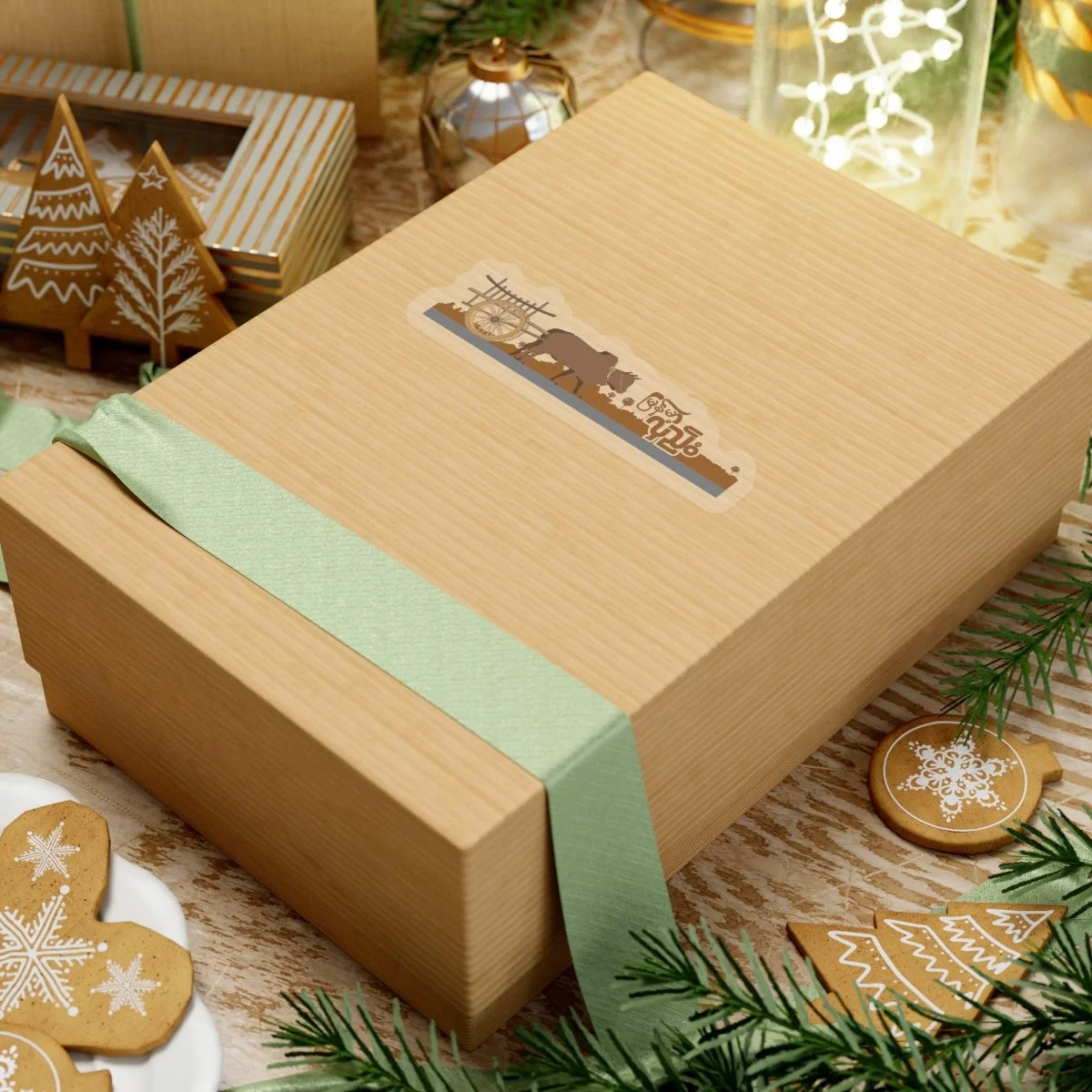 Image 1 of 3
Image 1 of 3

 Image 2 of 3
Image 2 of 3

 Image 3 of 3
Image 3 of 3




Traditional Myanmar Bullock Cart | Kiss Cut Sticker
Cut into a perfect shape of bold and charismatic designs reflecting Myanmar’s intriguing culture and heritage, these Kiss Cut Stickers have a wide enough border around for smooth peeling and can help you showcase your ultimate personal statement.
Type: Kiss Cut on High Opacity Film
Finish: Glossy Paper Finish (Scratch-Resistant)
Exclusively designed for you by talented Myanmar designers and creative minds.
Cut into a perfect shape of bold and charismatic designs reflecting Myanmar’s intriguing culture and heritage, these Kiss Cut Stickers have a wide enough border around for smooth peeling and can help you showcase your ultimate personal statement.
Type: Kiss Cut on High Opacity Film
Finish: Glossy Paper Finish (Scratch-Resistant)
Exclusively designed for you by talented Myanmar designers and creative minds.
Cut into a perfect shape of bold and charismatic designs reflecting Myanmar’s intriguing culture and heritage, these Kiss Cut Stickers have a wide enough border around for smooth peeling and can help you showcase your ultimate personal statement.
Type: Kiss Cut on High Opacity Film
Finish: Glossy Paper Finish (Scratch-Resistant)
Exclusively designed for you by talented Myanmar designers and creative minds.

Product Features
Vinyl surface stickers with a permanent acrylic adhesive backside, perfect for smooth flat surfaces (like laptops, journals, windows etc.)
Has a glossy finish that adds a light shine to the final product
Printed on fibrous substance material
95µ Density
Every product went through a 3-step quality check system
Size & Material
Length: 2” x 2” | 4” x 4” | 6” x 6”
Width: 2” x 2” | 4” x 4” | 6” x 6”
Surface: White
-
Delivery
Standard (United States) | 5-7 Business Days
Standard (Canada) | 7-10 Business Days
Standard (Rest of the World) | 10-14 Business Days
Direct Shipment from Myanmar | 10-20 Business Days
To ensure quality and customer satisfaction, we use various Suppliers and Fulfilment Partners for our products and orders. As such, delivery times provided here are estimated and might differ based on the number of products in the order to be processed and fulfilled.
You will see the available shipping method and delivery costs in the order checkout.
Order Production
Items are made to order and typically ship within 2-3 business days.
Items sourced directly from Myanmar typically ship within 5-7 business days.
Returns
Return requests can be made within 30 days of your item(s) delivery. Terms & Conditions Apply.
For more information please visit Delivery & Returns.
-
Apply the sticker to a clean, dust-free, oil-free, and moisture-free surface.
After application, press the sticker down with a clean cloth to maximize the sticker’s ability to stick to the surface and avoid air bubbles.
Make sure that the sticker is applied correctly the first time. With every reapplication, the sticker’s ability to stick will decrease.
Apply the sticker to a flat surface only. If applied on items that bend, are round, or in a cylinder form, we can’t guarantee its ability to hold.
-
Myanmar Traditional Bullock Cart
The bullock cart (also known as a bullock wagon or cow cart) is a common means of transportation used traditionally for many centuries in Myanmar. They are still widely used in Myanmar today where modern vehicles are too expensive or the infrastructure does not favor them. Bullock comes from the old English for castrated male cattle.
Bullock carts are primarily used for transporting passengers or carrying goods and the bullock cart is pulled by one or several bullocks or oxen. The cart (or a jinker) is attached to a bullock team by a special chain attached to yokes, but a rope may also be used for one or two animals.
The driver and any other passengers sit on the front of the cart, while the load is placed in the back.
Traditionally the cargo was usually agrarian goods and lumber.
Bullock wagons formed an important source of moving power in colonial Myanmar. Bullocks were preferred because they were cheaper, quieter, tougher, and more easily maintained than horses, therefore, making them more popular for draught work.
In the early days the flexible two-wheeled dray, with a center pole and narrow iron tires was commonly used.

This Design Is Also Available On
Apparel & Lifestyle
Home & Living

Accessories






